Regardless of income, gender, creed or species, when asked what the greatest front-wheel-drive car of all time is, the answer is almost unanimously the DC2 Integra, specifically the Type R. However, the Integra story is more than its race-ified trim level. The DC Integra chassis was the culmination of Honda’s collective strength during their greatest era. The mind, heart, and soul of the company came together to create something truly special that transformed the landscape of suburban malls across America and what a hot rod could be. Now, 25 years later, it’s only right that we tip our hats in honor of the latest inductee to the 25 Year Club: The third-generation Integra.
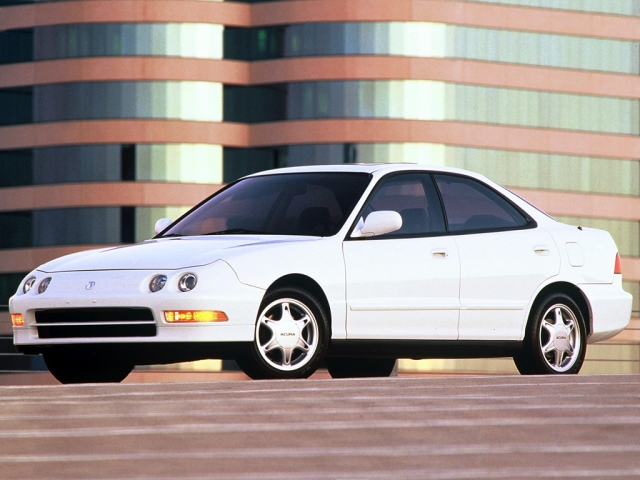
We will induct the Integra Type R into the 25 Year Club when its time comes, and even without it we can devote volumes of digital ink tot the third-generation Integra. There were variations in chassis code but,to simplify, we shall refer to the third-generation in common parlance as the DC Integra.
It is important to recognize that the DC Integra wasn’t created in a bubble. It the third iteration of a illustrious model line that spent 21 years proving to the world that FWD sports cars were capable of competing with the best that the world had to offer. To add another feather in it’s cap, the Integra proved that with technology that was largely already available from the rest of the Honda portfolio.
The prior generation DA9 chassis had received a ground-up redesign in 1990 that completely updated the engine and suspension and modernized the design aesthetic. The DA Integra’s legacy was the refinement of the lightweight sports car formula and introduction of the GS-R trim level which, for the first time, offered a variable valve timing-equipped affordable sports car.
The DC Integra debuted in Japan on May 21, 1993, and would arrive on US shores for the 1994 model year. Most noticeably, the rectangular brick of headlamps in the front had been replaced with a radical quad headlight design prominently featuring its standard equipment projector lenses. The hood, instead of curving down to a bumper, flowed into the front fascia that encapsulated the entire area around the headlamps in a solid mask, improving aerodynamics over the outgoing model.
Around back, the taillights retained a largely traditional style but with a subtle downward curve towards a recessed hatch handle, elegantly hidden in the gap between the rear bumper and hatch. It’s also worth noting that there were over two dozen exterior paint options for the DC Integra during its production cycle putting modern color palates to shame.
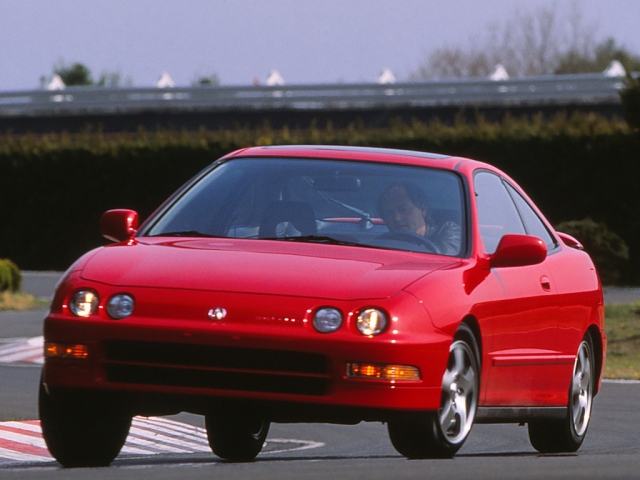
Mechanically, Honda’s winning formula had proven popular on several of their other models so was hard to justify completely redesigning it. The DC Integra was similar enough to the outgoing generation that parts were largely interchangeable. Suspension corner assemblies, brakes, engines and more could be bolted in between chassis, including the Civic on which it was based. It would be one of the last times that parts interchangeability was possible at such a level, and helped spawn an explosion of shadetree tuning.
Under the hood, the DC Integra’s advancements were most apparent. Even the most basic engine powering US market cars, the B18B1, had its improvements. Known as the LS engine denoting the most common trim level it was found in, the 1.8-liter 16-valve inline-four saw a 10 horsepower increase to 140 over the outgoing B18A1 from improvements to cylinder head flow and a 100rpm redline bump to 6800. The B18B1 can be identified by its much cleaner valve cover design removing the lumps between cam lobes, but still had exposed spark plug cables.

The real engine crown, though, is shared by the Integra’s various VTEC engines. The Integra Type R’s motor was one of the greatest naturally aspirated four-cylinders of all time, but the “attainable” GS-R sports coupe trim level offered something that was already plenty great. Its B18C1 came out of the box making 170 horsepower (Japanese GS-R models made 178), and was as reliable as the sunrise. Even by today’s standards, replicating the specific output (horsepower per liter) found in the Honda B-series is next to impossible without forced induction or sacrificing longevity.
It sang a sweet tune of high precision craft, too. Particularly, the GS-R emitted a subtle but exciting change in intake tone when the secondary runners opened up at 5,750 rpm, like the dessert on top of the VTEC’s 4400 rpm main course.

The new Integra and was an instant hit for the Acura marque and immedately became one of Honda’s most recognizable cars. Buyers of all ages were absolutely smitten, but for different reasons, and that was key to the Integra’s brilliance. It was nimble, light, and a hoot to drive, yet still refined enough to wear the Acura caliper logo.
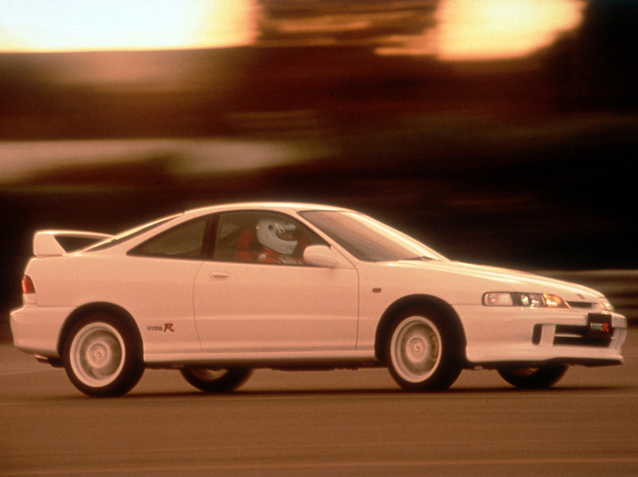
There was just one slight issue with the Integra in the Japanese market. Buyers absolutely loathed the controversial quad headlight design. So in 1995, Honda returned to a bar-style headlamp similar to that of the older DA Integra. In a weird twist, Honda didn’t entirely commit to the design for the Japanese market, keeping the four projectors for the SiR-II trim level until it was axed in 1998.
The new face became representative of the “JDM” craze, in no small part because it graced the stateside unobtainable Type R. For tuners, it added to the Integra allure and helped fuel the obsession of Japan-market parts, even cosmetic ones, for the discerning connoisseur. In the Honda community, JDM front end became a $1,500 investment in overnight baller status.

The mid-model update outside of the Japanese market came in 1998. The quad headlights stayed, but small aesthetic changes included a reshaped and slightly more angular headlight housing, an updated lower bumper design, and the embossed Integra logo previously located next to the headlight was moved to below the headlight. The LS trim level received alloy wheels and the RS trim level was dropped at the end of the year.
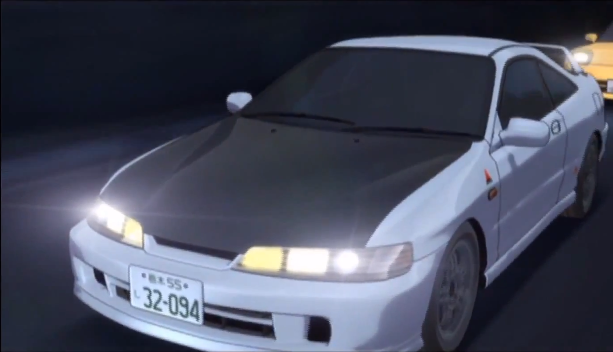
By the mid-90s, the Integra’s performance attributes were well-known by street racing communities across the US. In an era before imports were allowed to race side-by-side with domestics, and when Battle of the Imports was exclusively a west coast event, nighttime streets teemed with the wailing sounds of Honda B-series fours.
The longer wheelbase of the Integra over other Hondas allowed the car to be much easier to launch and consistently fast in quarter-mile drags. It became one of the de facto street racers of the era.
As the import drag racing wave began to expand eastward, the Integra gained even more notoriety. Almost all the major teams in the 1990s had a DC Integra racing for them. One of the most famous Integra drivers of this era was Chris Rado, who made history when he took his FWD vehicle to the 8-second range with his 8.91 @ 191 mph pass in 2002. We mentioned the importance of 10-second passes in the 25 Year Club induction of the EG Civic, but in the eights it’s no longer just keeping up with domestics, it’s beating most of them.
The DC Integra was still setting records in the early 2000s, and racers continually refined the chassis through the decade. By the end of the 2000s, Tony Palo matched that sub-9 second time in an Outlaw Class car (one that still had a complete factory unibody).
Today, the Integra continues to lead the pack of FWD drag racers and is even seen taking on larger game in half-mile racing. Myles Kerr of English Racing holds the world record in the FWD half-mile with a street-tuned, 1,200-horsepower B-series-powered Integra GS-R clocking a blistering 213.97 mph.
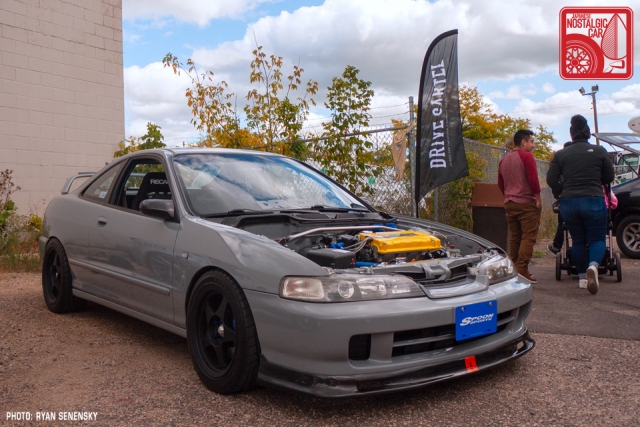
Import magazines of the era like Super Street, Modified, and Import Tuner found themselves packed with DC Integras from the get go of the big body kit era. As the tuner scene began to shift toward a cleaner aesthetic in the early 2000s, the DC Integra once again found itself at the head of the pack. Today, the Integra is beloved with both USDM an JDM front clips in the show scene and is still regularly seen being built to world class levels.
Hondas were unstoppable on the streets, but a cancer was eating away at the community. Hondas had always been notoriously easy to steal, but widespread theft reached a breaking point in the 2010s. In some areas, like South Florida, it got so bad that the cars at Wek’fest Miami between 2014 and 2015 had nearly no overlap — not because owners had changed their cars for the next year, but because almost every car had been stolen. Honda Day Miami in 2015 saw 30 cars disappeared and in 2013 K-Tuned’s entire display booth was stolen from a show right before SEMA. Minneapolis enthusiasts started a Honda Recovery Facebook page run by tow truck drivers and enthusiasts to recover cars after they were stolen.
Owners tried to combat thieves by installing kill switches, removing fuses, installing removable steering wheels with locking hubs, or just taking the ECU with them when they parked the car. It almost became a fashion statement to carry your steering wheel around as you strolled the mall. Despite their best efforts, though, the scofflaws kept prevailing. This was the nail in the coffin of the Integra being the default car in the street racing world. You could easily build one to dominate anything you came across, but all that effort could be for naught if the wrong person trailed you home.
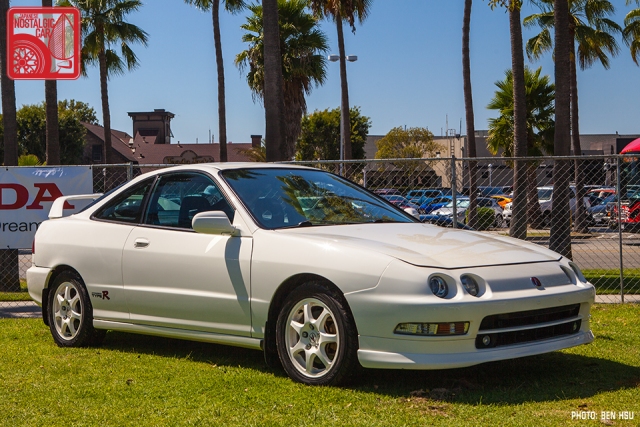
Today, whether you grew up dropping second on the highway with Integras, or are just discovering their glory for the first time, the fact of the matter is they’ve made their presence felt on the collector market. The holy grail is considered the stock Integra Type-R, and prices regularly surpass that of NSXes in the collector market. That being said, there remains a remarkable trend that has developed with the standard Integra, as tastefully modified examples are capable of bringing in nearly as much money as preserved models.
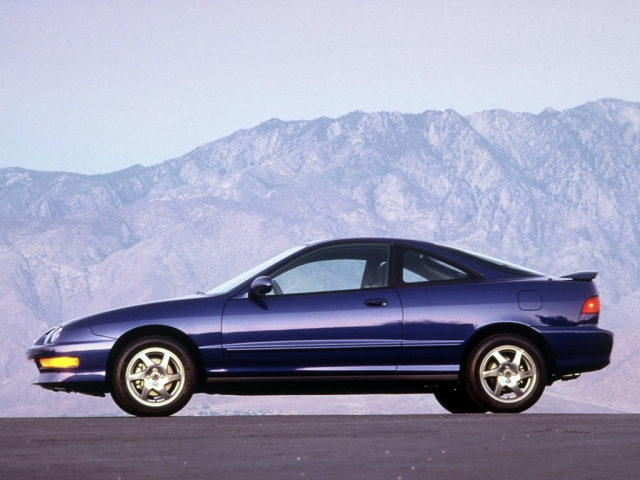
The Integra was part of a wave of lightweight sports coupes coming from Japanese carmakers looking to balance performance, practicality and economy. Even in this highly competitive segment, it vastly outlasted the regular lifecycle of such a car. Rather than four years, the Integra stuck around for eight, ending production in 2001. No car like it has come out before or since, though many have tried.
The replacement, called the RSX in the US, debuted in 2002 and though it was a good car by all respects, a dumbing down of the magical double-wishbone suspension meant it never could capture the spark of the DC Integra. This car is one for the ages, one that defined car enthusiasm for a generation, and we are happy to welcome it into the Japanese Nostalgic Car fold. Happy 25th birthday Integra, we’ve been waiting for you.



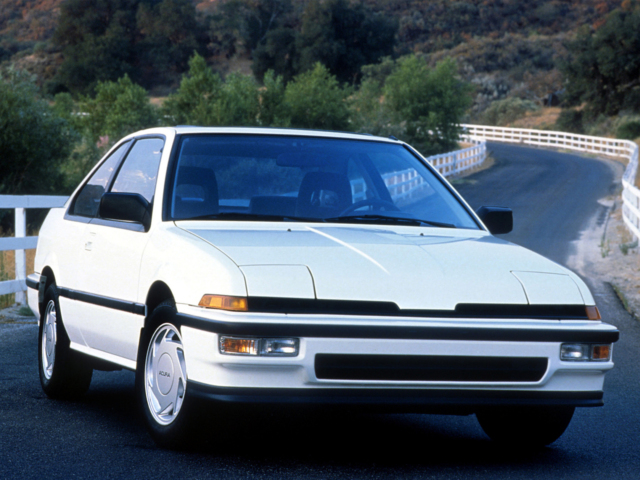
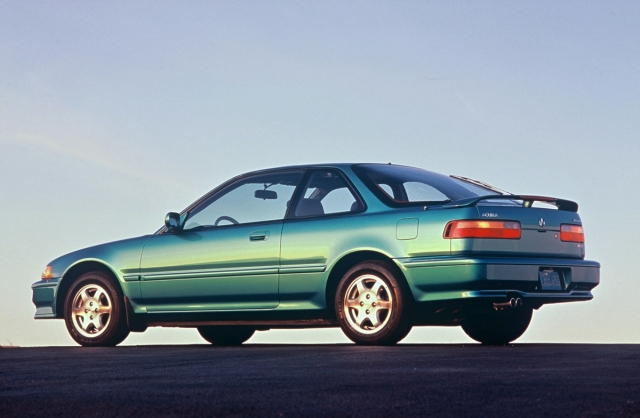

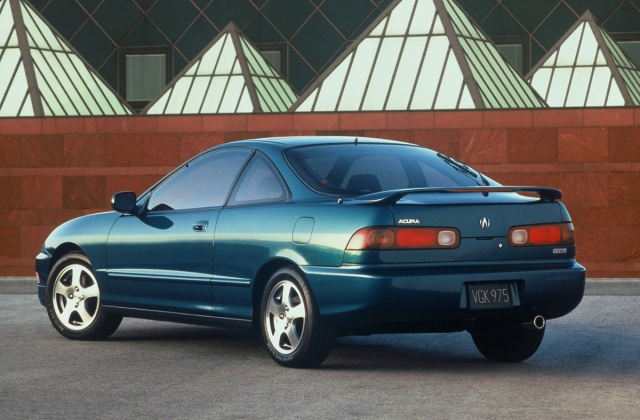
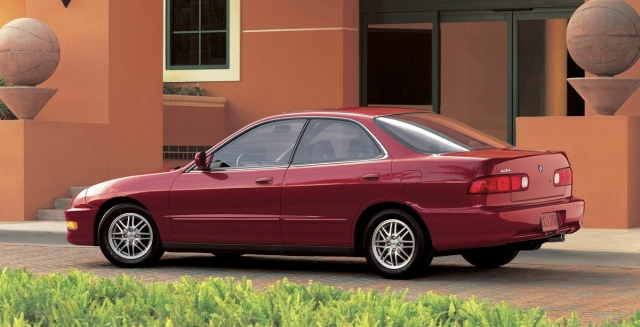

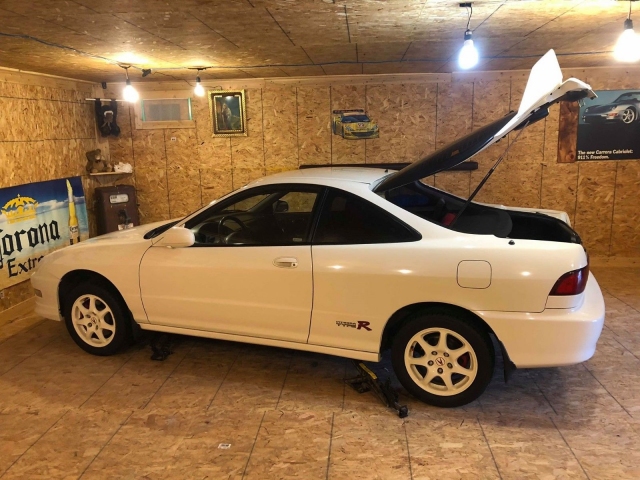




The worse OP car in any racing game. Fuck Initial D Arcade Stage Ver. 2.
Love these!! I daily an 01 gsr, 50 miles a day 6 days a week. I’ve tried to get other dd’s, but I always go back to it. They just don’t make cars like this anymore, imo. I’ll keep it forever, I do plan on trying to find another daily soon tho because I’m getting worried some fool is gonna hit me and destroy it. And around here, there’s no way I could replace her. #”s matching black last year dc2. 178k
As much as I’d like to see a new Integra…the idiots running Honda MoCo would undoubtedly find a way to completely, unceremoniously ruin it. Then, they’d justify its failure as a reason to produce more disposable, forgettable cars.
Honda’s the new Pontiac, folks!
Civic Type Grand Am ftw!
Yaaaaay
Great era of Japanese cars but in the next few years what could be the cars that reach similar condition of being desirable? Which car of the next decade of 2000 would be a good option? (maybe it’s a question for the week)
I came up in the 2000s era and the Integra was one of the cars that was most popular.
While I always stayed away because of the high thefts on the car, I love the body and how much the body line seems timeless.
I wouldn’t mind a 4 door with type R front end. I always had a thing for that look.
There was so many parts for that car at the time.. it was insane.
I used to go to Vancouver BC in the early 2000s and for some reason, they kept most of the cars clean and JDM. They also seemed to have a ton of Type Rs.
http://www.f31club.com/2017/04/26/boom-2k-2000/
I went to Nisei week in LA in 2001 (where I met RJ and he let me sit in his S2000 and met Turbomom). Art in Motion had a SUPER CLEAN Bronze integra!
http://www.f31club.com/wp-content/uploads/2017/04/img462.jpg
http://www.f31club.com/2017/04/30/nisei-week-little-tokyo-los-angeles-2001/
When I moved to the bay area, I was going to local meets and one website that I used to frequent was Team Integra.net.
Some clean Integras there too.
http://www.f31club.com/2017/04/28/team-integera-meet-2007/